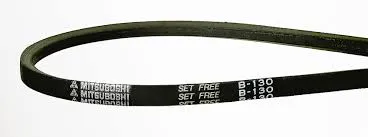- Arabic
- French
- Russian
- Spanish
- Portuguese
- Turkish
- Armenian
- English
- Albanian
- Amharic
- Azerbaijani
- Basque
- Belarusian
- Bengali
- Bosnian
- Bulgarian
- Catalan
- Cebuano
- Corsican
- Croatian
- Czech
- Danish
- Dutch
- Afrikaans
- Esperanto
- Estonian
- Finnish
- Frisian
- Galician
- Georgian
- German
- Greek
- Gujarati
- Haitian Creole
- hausa
- hawaiian
- Hebrew
- Hindi
- Miao
- Hungarian
- Icelandic
- igbo
- Indonesian
- irish
- Italian
- Japanese
- Javanese
- Kannada
- kazakh
- Khmer
- Rwandese
- Korean
- Kurdish
- Kyrgyz
- Lao
- Latin
- Latvian
- Lithuanian
- Luxembourgish
- Macedonian
- Malgashi
- Malay
- Malayalam
- Maltese
- Maori
- Marathi
- Mongolian
- Myanmar
- Nepali
- Norwegian
- Norwegian
- Occitan
- Pashto
- Persian
- Polish
- Punjabi
- Romanian
- Samoan
- Scottish Gaelic
- Serbian
- Sesotho
- Shona
- Sindhi
- Sinhala
- Slovak
- Slovenian
- Somali
- Sundanese
- Swahili
- Swedish
- Tagalog
- Tajik
- Tamil
- Tatar
- Telugu
- Thai
- Turkmen
- Ukrainian
- Urdu
- Uighur
- Uzbek
- Vietnamese
- Welsh
- Bantu
- Yiddish
- Yoruba
- Zulu
Вер . 03, 2024 08:26 Back to list
poly v serpentine belt
Understanding the Poly-V Serpentine Belt An Essential Component for Modern Vehicles
The poly-V serpentine belt, also known simply as the serpentine belt, is a critical component found in many modern vehicles. This belt is designed to drive multiple peripheral devices, including the alternator, power steering pump, water pump, air conditioning compressor, and sometimes even the engine's cooling fan. Its design and function are vital for the efficient performance of an engine, making it essential for motorists to understand its significance.
Design and Features
The poly-V serpentine belt is characterized by its unique construction featuring multiple grooves running along its length. Unlike traditional V-belts, which typically drove a single component, the serpentine belt's multi-groove design allows it to accommodate several accessories at once. These grooves enable the belt to grip the pulleys securely, resulting in reduced slippage and improved power transmission efficiency.
Moreover, the poly in poly-V refers to the use of synthetic materials that enhance durability and flexibility. These materials are resistant to wear, heat, and environmental conditions, which significantly extends the lifespan of the belt. In recent years, advancements in manufacturing technology have also led to the development of belts with enhanced tensions and better resistance to stretching, which is crucial for maintaining optimal performance.
Functionality
The primary function of the poly-V serpentine belt is to transmit power from the engine’s crankshaft to various components. As the engine runs, the crankshaft spins the belt, which in turn drives all connected accessories. This system not only simplifies the design (fewer belts mean fewer parts) but also makes it easier to service, as a single belt can replace multiple individual belts.
poly v serpentine belt

Moreover, the serpentine belt operates with a tensioner that ensures it remains taut. Over time, however, this tension can diminish, leading to slipping and potential failure. Regular inspection of the belt for signs of wear, cracks, or fraying is crucial for maintaining vehicle performance and preventing breakdowns.
Common Issues and Maintenance
As with any vehicle component, the poly-V serpentine belt can encounter issues. Common problems include wear due to friction, cracks from prolonged exposure to heat, or misalignment that can cause uneven wear. Signs that a serpentine belt may need replacement include squeaking noises, visible cracks, or loss of power to devices like the alternator or power steering.
Routine maintenance involves inspecting the serpentine belt during regular vehicle check-ups and replacing it according to the manufacturer's recommended schedule, typically every 60,000 to 100,000 miles, depending on driving conditions. It’s also advisable to change the tensioner and idler pulley at the same time, as these parts often wear out concurrently.
Conclusion
In summary, the poly-V serpentine belt is a vital component that contributes to the smooth operation of modern vehicles. Its design allows it to efficiently power multiple accessories with a single belt, showcasing advancements in automotive engineering. Regular maintenance and timely replacement are essential to ensure continued reliability and performance, ultimately enhancing the safety and efficiency of the vehicle. Understanding the role of the serpentine belt can empower vehicle owners to take proactive steps in their vehicle maintenance, leading to a smoother driving experience.
-
Korean Auto Parts Timing Belt 24312-37500 For Hyundai/Kia
NewsMar.07,2025
-
7PK2300 90916-T2024 RIBBED BELT POLY V BELT PK BELT
NewsMar.07,2025
-
Chinese Auto Belt Factory 310-2M-22 For BMW/Mercedes-Benz
NewsMar.07,2025
-
Chinese Auto Belt Factory 310-2M-22 For BMW/Mercedes-Benz
NewsMar.07,2025
-
90916-02660 PK Belt 6PK1680 For Toyota
NewsMar.07,2025
-
drive belt serpentine belt
NewsMar.07,2025

